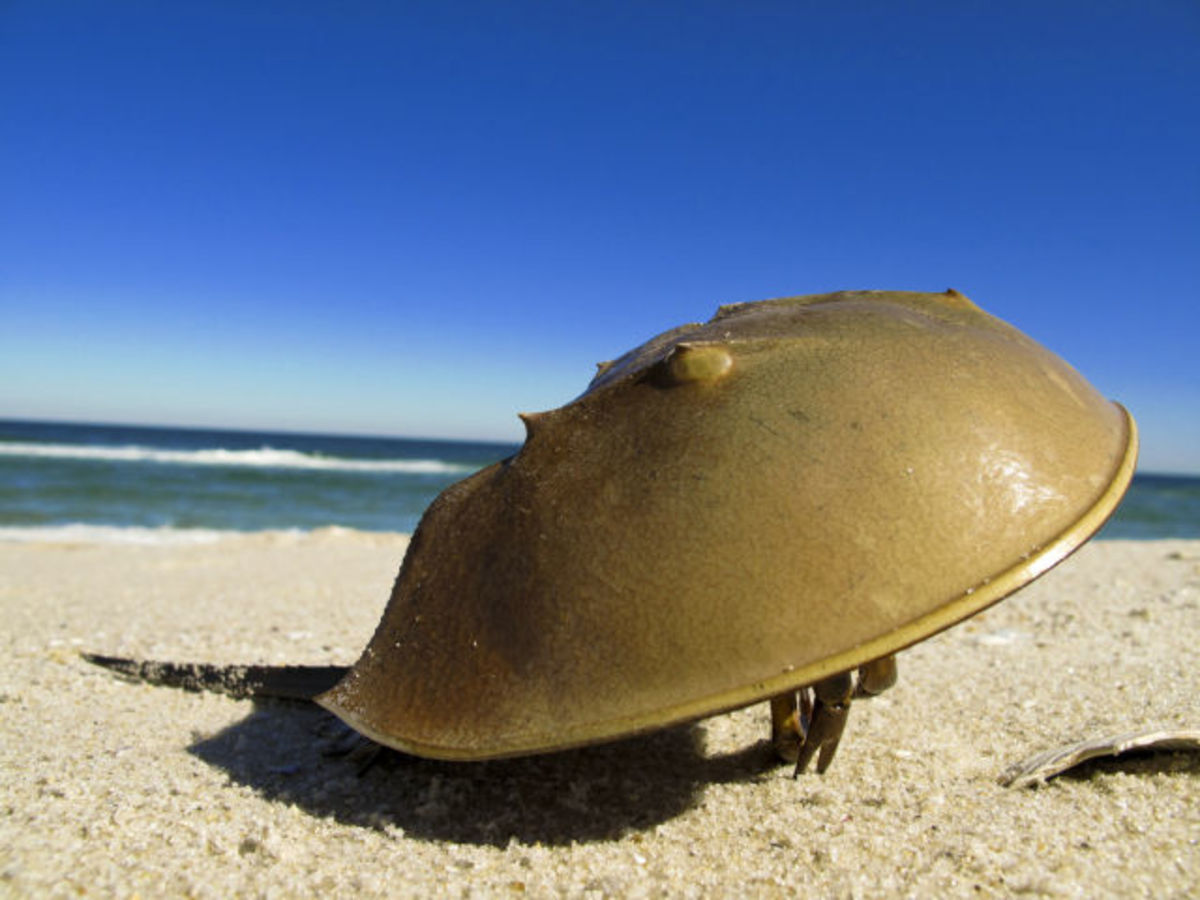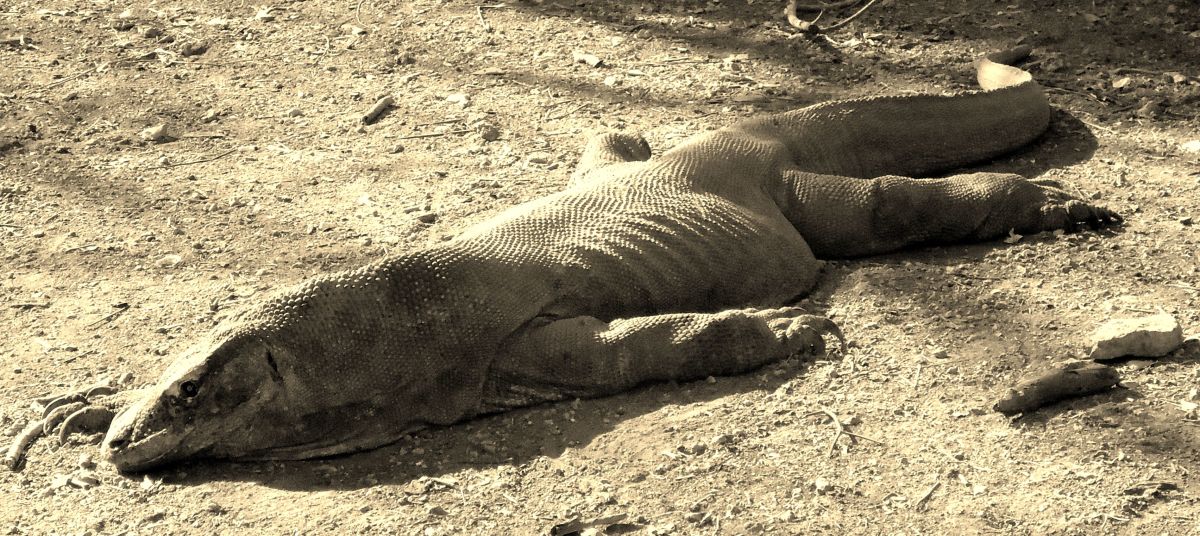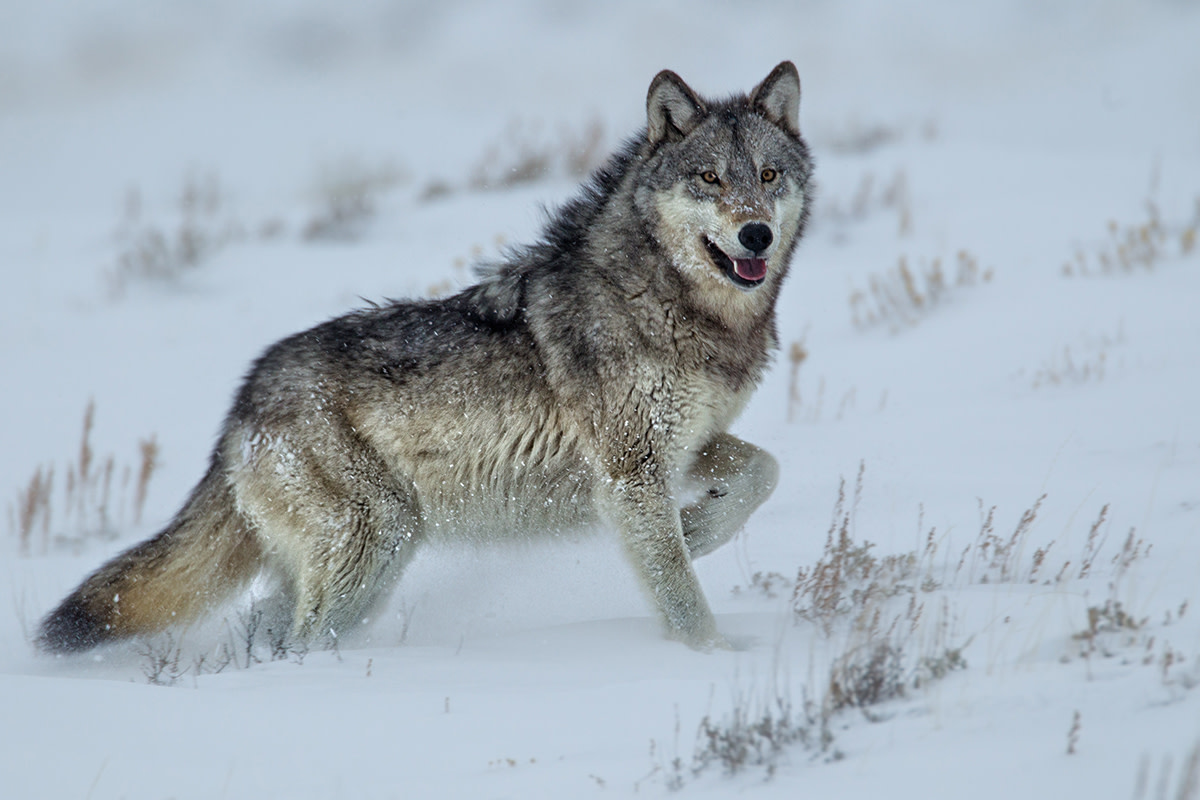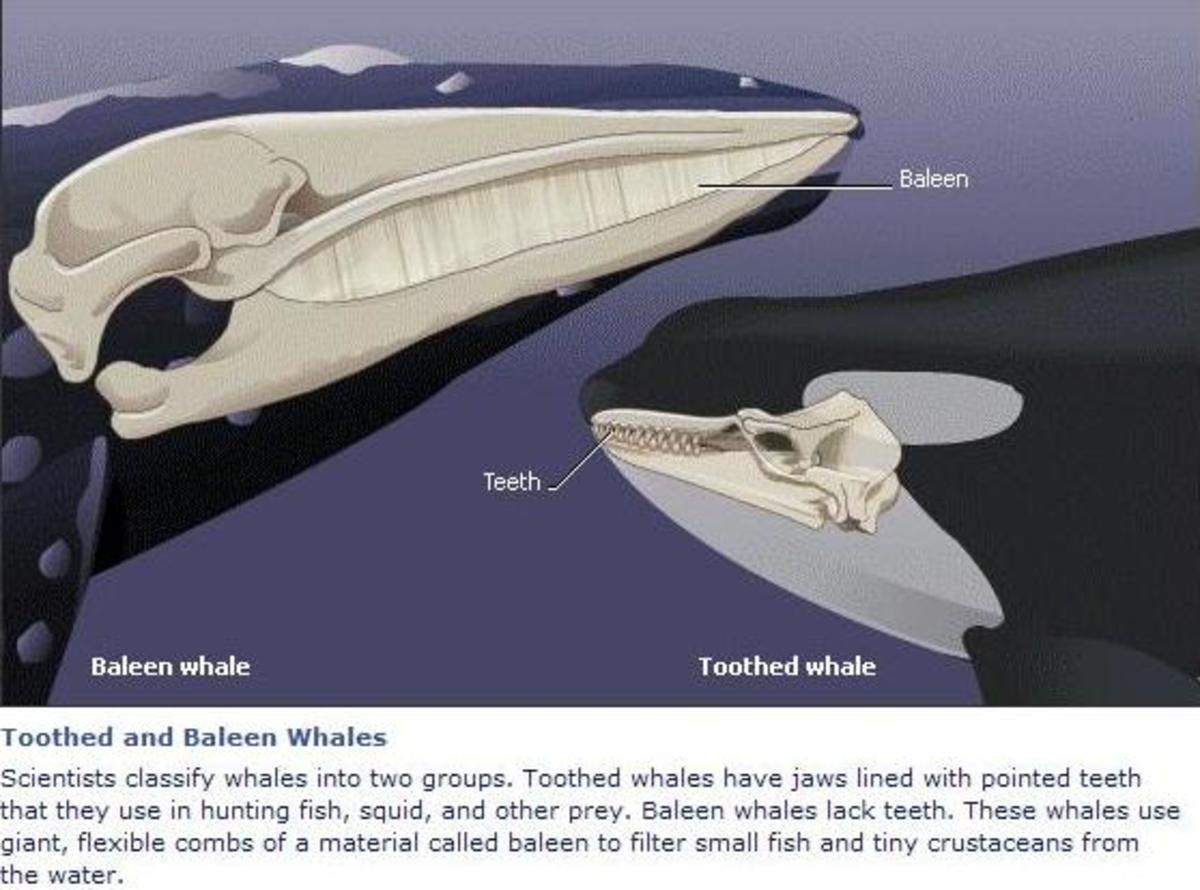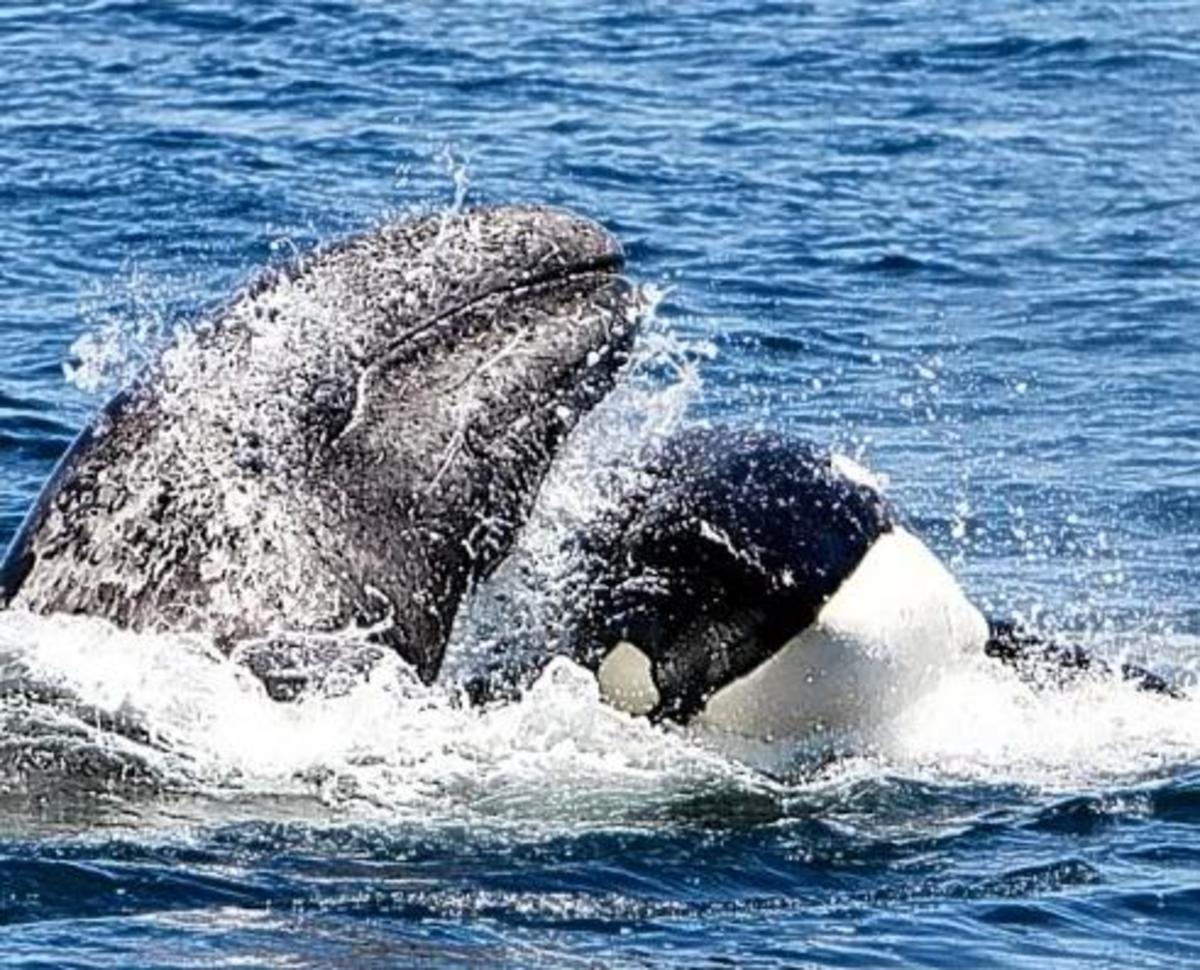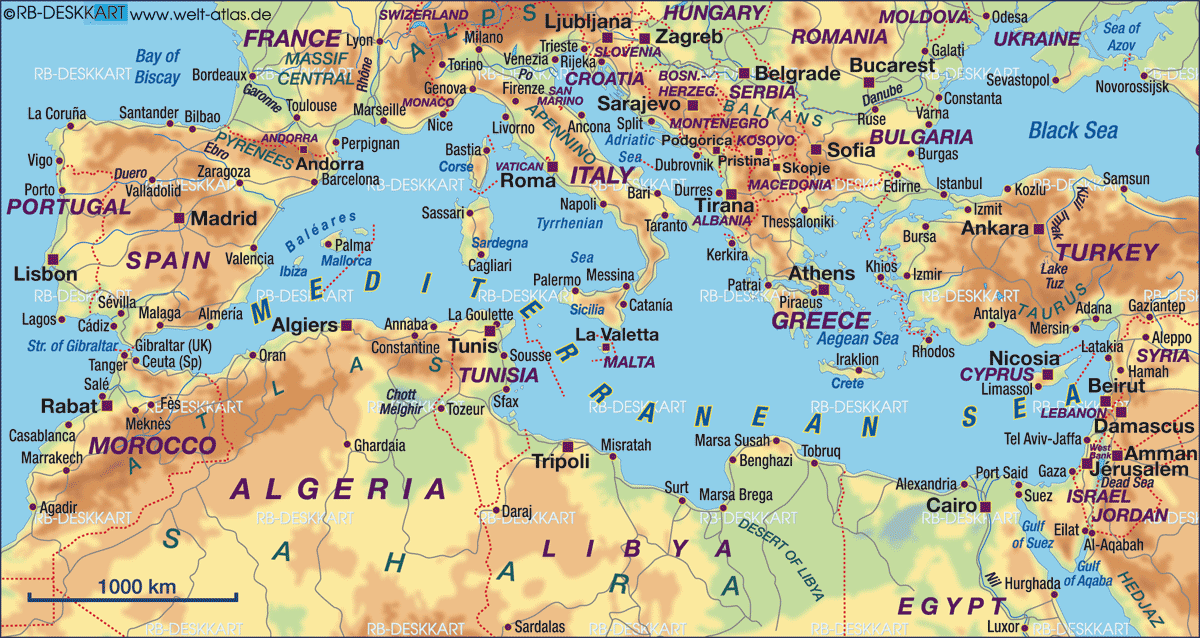- HubPages»
- Education and Science»
- Life Sciences»
- Marine Biology
Horseshoe Crabs
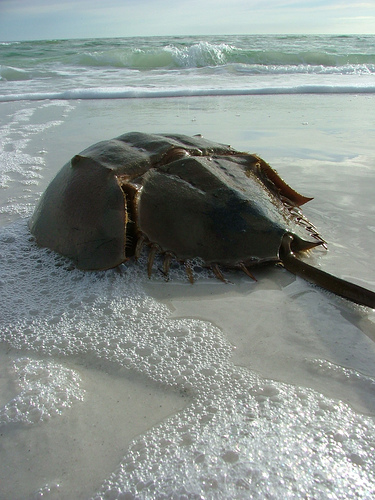
Horseshoe Crab Books
Horseshoe crabs are one of the coolest animals around.
Horseshoe crabs are not true crabs. instead, they're arachnids, distantly related to spiders. Their closest living relative, the trilobite, has been extinct for 250 million years, and horseshoe crabs themselves have remained virtually unchanged for at least 245 million years. They're so perfectly evolved they lived more than 100 million years before the dinosaurs, and survived both the catastrophe that killed the dinosaurs and the larger Permian mass extinction that killed 90% of marine species and 70% of land species virtually unscathed.
There are four subspecies. The American horseshoe crab (Limilus polyphemus) is the only one residing in the Atlantic Ocean, and it lives along the Eastern seaboard of North America, from Maine to the Yucatan Peninsula of Mexico. Their main population resides between Virginia and New Jersey, and their most popular spawning ground is Delaware Bay, where hundreds of thousands of crabs pull themselves out of the water at high tide to mate and lay their eggs in the sand, as many as 20,000 per female.
Horseshoe crabs have a body that looks like an armored tank, with a scary-looking but harmless spike of a tail and a total of ten eyes. Their eyes are unusual among invertebrates and much studied by scientists, because they closely resemble those of vertebrates.
The crabs eat clams and marine worms, but have no jaws. They use their legs to crush food and move it to their mouth, located in the center of their body. As a result, they can only eat when they are walking.
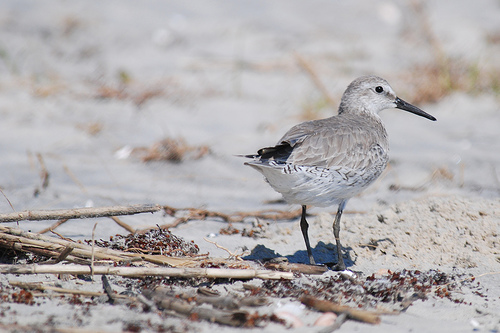
Ecological Importance
Besides being cool, horseshoe crabs are also important ecologically. At least 11 species of migratory birds depend on the crabs' protein-rich eggs as a food source during their travels, including the red knot, which travels 9,000 miles from the tip of South America to the Canadian Arctic every year and which more than doubles its weight - the fastest weight gain of any known vertebrate - during its two-week stopover in Delaware Bay, one of the crabs' favorite spawning grounds. Horseshoe crabs are also an important food source for rare loggerhead sea turtles, which are among the few predators large enough to eat the adult crabs.
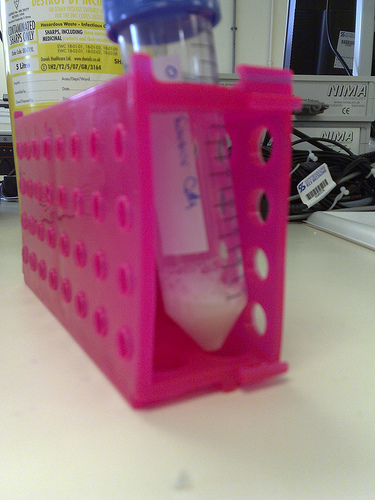
Importance to Humans
Not only are they an important part of the ecosystem of the Eastern seaboard, horseshoe crabs are also vitally important to human beings. Horseshoe crabs have blood that is based on copper, rather than iron, like our own. In the 1950's, scientists discovered a compound in the blood called limulus amebocyte lysate that clots when it comes in contact with harmful bacteria. The biomedical industry is now required in many countries, including the United States, to use lysate to test any object or substance, such as scalpels or drugs used in IVs, that could cause infection during a medical procedure. It's estimated that as many as a million lives might have been saved by lysate since its discovery.
The blood of the horseshoe crab is the only known source of this important compound.
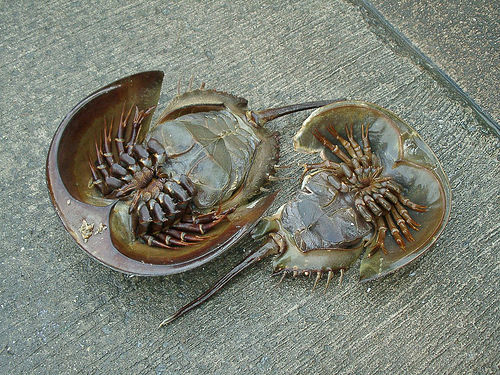
Populations in Decline
Unfortunately, populations of the horseshoe crab have been in decline for years. There are several reasons for this:
Their own anatomy kills them. Every year about 10% of spawning crabs are killed when they are knocked over on their backs by large waves on the beach and become unable to right themselves. In a healthy population, this loss would be insignificant to the species as a whole, but with populations in decline for other reasons, it has become a major concern, and human volunteers have taken to patrolling the beaches during spawning time and rescuing as many stranded crabs as possible.
A decline in the populations of the crabs' main food sources - marine worms and mollusks - is also believed to be contributing to their declining population.
Overfishing, however, is the primary concern. The lysate industry captures about 300,000 crabs every year to bleed. About 40% of these will die from trauma or be sold to the bait industry. Though the biomedical industry's catch, like the natural loss of spawning crabs, is considered sustainable under normal circumstances, the bait industry is not so benign. Horseshoe crabs are cut up and used as bait by fishermen feeding the growing demand for conch (whelk) and and American eel in East Asian food markets. Between the late 1960's and 1996, the annual catch rose from 10 to 2,550 tons.
Horseshoe Crabs for Kids
Conservation Efforts
The horseshoe harvest was virtually unregulated until 1999, when concerns about the declining population began to catch the attention of lawmakers. Since then, catch limits, protected sanctuaries, and a two-year moratorium on horseshoe harvesting in New Jersey and Delaware have combined to reduce the harvest by 70%.
As a result, populations are believed to be stabilizing, though firm data is difficult to come by, in part because the crabs, which live about 30 years in the wild, take about 10 years to mature sexually. Immature crabs do not spawn and their numbers are therefore difficult to gauge, so it takes years to determine if conservation efforts are working, and even longer to see how shorebirds and other species dependant on the crabs are faring.
The horseshoe crab is one of the lucky species. With its use in the bait industry now regulated more carefully, its primary consumer, the biomedical industry, is strongly motivated to manage its populations sustainably, and the curious creature has also attracted growing attention from the public, thanks to its amazing history and unique biology. Delaware recently voted to make the horseshoe crab the state's official marine animal, and efforts to count spawning crabs and rescue stranded ones routinely draw hundreds of volunteers. With luck and proper management the horseshoe crab will be around for another 250 million years or more.
Learn More
- The Horseshoe Crab
A very thorough website devoted to horseshoe crab education and conservation - Horseshoe Crabs
Another thorough website from the University of Delaware - Horseshoe Crabs
Another useful website from the Maryland Department of Natural Resources, which includes information about a project to raise crabs in school classrooms



